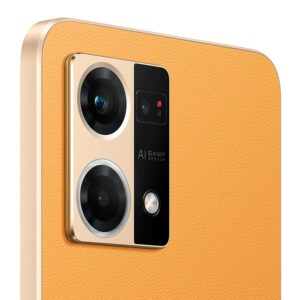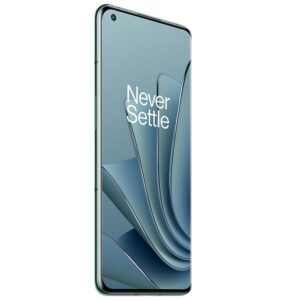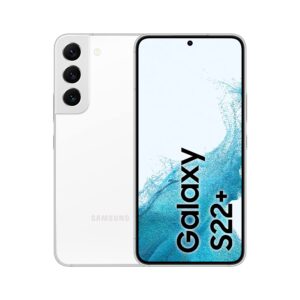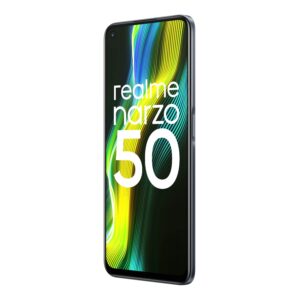The Power of Color Psychology in Shaping Behavior 2025 Leave a comment
1. Introduction to Color Psychology as a Subset of Visual Cues
Building upon the foundational understanding of how visual cues influence human behavior, it is essential to recognize that color stands out as one of the most powerful and nuanced signals within the visual spectrum. Unlike other visual elements such as shape, size, or motion, color inherently carries emotional and cultural connotations that shape perceptions and responses. Historically, humans have associated certain colors with specific meanings—red with passion or danger, blue with calmness or trust, and yellow with optimism or caution—illustrating the deep-rooted psychological impact of color across civilizations.
Scientific research supports these cultural associations, revealing that our perception of color triggers specific neural pathways and emotional reactions. For example, studies using functional magnetic resonance imaging (fMRI) demonstrate that exposure to warm colors like red and orange activates brain regions linked to arousal and excitement, whereas cool colors such as blue and green tend to activate areas associated with relaxation and reflection. This intrinsic connection between color perception and emotion underscores its unique influence among all visual cues.
Differentiating color from other visual signals and its unique influence
While shapes and movements can alert us or direct attention, color often conveys complex messages without requiring additional context. For instance, a red stop sign immediately communicates urgency and danger, transcending language barriers. Unlike static shapes, color can evoke visceral emotional responses, influencing our mood and decision-making instantaneously. This uniqueness makes color a potent tool for guiding behavior in various settings—be it marketing, interior design, or social interactions.
Historical perspectives on color and human behavior
Throughout history, colors have been imbued with symbolic meanings and used deliberately to influence behavior. In ancient Egypt, certain colors were reserved for royalty, signifying power and divine authority. During the Middle Ages, colors in clothing and banners communicated allegiance and social hierarchy. In more recent history, the use of color in propaganda—such as the red banners of socialist movements—demonstrates how color can mobilize collective action. These historical patterns reveal that humans have long recognized and harnessed the psychological power of color to shape social and individual behavior.
The scientific basis for color perception and emotional response
Modern neuroscience and psychology have elucidated how the brain processes color stimuli. The retina’s cone cells detect color wavelengths, transmitting signals to the visual cortex, which interacts with limbic system regions responsible for emotion. For example, the amygdala, which processes fear and pleasure, responds preferentially to certain colors, influencing our emotional state. Such findings provide a scientific foundation for understanding how color not only catches our eye but also subtly shapes our feelings and choices, making it an indispensable element of behavioral influence.
2. The Psychological Impact of Colors on Human Emotions and Decision-Making
a. How specific colors evoke particular emotional states
Research indicates that colors can directly influence our emotional states. Red, for instance, often stimulates feelings of excitement and urgency, which is why it is frequently used in clearance sales. Conversely, blue tends to promote calmness and trust, making it a popular choice in financial institutions and healthcare environments. Green, associated with nature, fosters relaxation and renewal, often used in wellness and eco-friendly branding. These emotional triggers are rooted in both biological responses and cultural conditioning.
b. Color associations across cultures and their behavioral implications
While some color meanings are universal—such as red symbolizing danger—many are culture-specific. In China, red signifies prosperity and good fortune, leading to its prominent use in celebrations and branding. In Western societies, white is often associated with purity and weddings, whereas in some Eastern cultures, it can symbolize mourning. These cultural differences influence behavior; a marketing campaign that leverages culturally relevant color symbolism can be more effective in eliciting desired responses.
c. The role of color in influencing perceptions of trust, urgency, and safety
Color plays a crucial role in shaping perceptions related to trustworthiness and safety. Blue’s association with reliability makes it a preferred color for banks and tech companies. Yellow, with its bright and optimistic vibe, can attract attention but may also signal caution if overused. Red’s ability to evoke urgency explains its use in clearance sales and warning signs. Understanding these perceptual cues allows marketers and designers to strategically influence consumer behavior and public safety messaging.
3. Color Psychology in Consumer Behavior and Marketing Strategies
a. Color choices in branding and packaging and their effect on purchasing decisions
Brands strategically select colors to evoke specific responses. For example, fast-food chains often use red and yellow to stimulate appetite and create a sense of urgency. Luxury brands may opt for black or gold to convey exclusivity. Packaging designers utilize color contrast and harmony to attract attention and influence perceptions of quality. A well-chosen color palette can significantly increase product appeal and conversion rates, as consumers subconsciously associate colors with product attributes.
b. Case studies of successful color campaigns and their psychological underpinnings
One notable example is the Coca-Cola red, which not only enhances brand recognition but also evokes excitement and passion. Similarly, the use of purple in luxury skincare brands conveys sophistication and indulgence. These campaigns demonstrate how understanding color psychology can create emotional bonds with consumers, driving brand loyalty. Data from marketing research indicates that up to 90% of snap judgments about products can be based solely on color, emphasizing its importance in campaign success.
c. The importance of context and environment in color-driven consumer responses
Context dramatically influences how color impacts behavior. A red interior in a fast-food restaurant can stimulate hunger, but the same red in a healthcare setting might evoke anxiety. Lighting, surrounding colors, and cultural expectations modify emotional responses. Retail environments often use ambient lighting and color schemes to guide shoppers toward certain behaviors—like calming blues in relaxation zones or energetic oranges in active play areas—highlighting the need for strategic environmental design.
4. The Neuroscience of Color Perception and Behavioral Responses
a. Brain regions activated by different colors and their behavioral outcomes
Neuroscientific studies reveal that exposure to colors activates specific brain regions. For example, red stimulates the amygdala and hypothalamus, promoting arousal and alertness, which explains its use in environments requiring quick responses. Blue activates areas linked to calmness, such as the prefrontal cortex, facilitating focus and decision-making. These neural responses underpin the behavioral effects observed in various contexts, from marketing to safety signage.
b. How color influences attention, memory, and cognitive performance
Colors also affect cognitive functions. Research shows that blue environments enhance attention span and memory retention, making them ideal for classrooms and workspaces. Conversely, red can increase vigilance but may impair complex problem-solving due to heightened arousal. This interaction suggests that selecting appropriate colors for specific tasks can optimize cognitive performance.
c. The interaction between color and other sensory cues in shaping behavior
Color does not act in isolation; it interacts with scent, sound, and tactile sensations to influence behavior. For example, a brightly colored, aromatic bakery appeals to multiple senses, increasing customer volume. Similarly, color-temperature combinations—warm lighting with warm hues—can create inviting environments that encourage longer stays. Recognizing these multisensory interactions enhances the effectiveness of behavioral design strategies.
5. Practical Applications of Color Psychology in Daily Life
a. Designing effective workspaces and environments to enhance productivity and mood
Employing calming colors like light blue and green in office design can reduce stress and improve focus. Incorporating accent colors for creativity, such as yellow or orange, can stimulate innovation. Ergonomic layout combined with strategic color choices creates environments that promote well-being and efficiency, supported by studies linking color schemes with mood and productivity metrics.
b. Color considerations in education and child development
Educational environments benefit from a balanced palette. Soft blues and greens foster calmness, aiding concentration, while vibrant colors like red can energize students during active sessions. Color-coded materials enhance organization and memory retention. Tailoring classroom colors to developmental stages can support emotional regulation and learning outcomes.
c. Personal branding and fashion: using color to influence social perceptions
Individuals leverage color in personal presentation to communicate traits. For instance, wearing black can convey sophistication, while red suggests confidence and assertiveness. Fashion designers utilize color trends to align with societal moods, and personal branding experts recommend color schemes that resonate with target audiences. Understanding the psychological impact of color enhances social perception and influence.
6. Ethical Considerations and Limitations of Color Influence
a. Potential for manipulation and ethical boundaries in using color psychology
While harnessing color can be beneficial, it also raises ethical concerns about manipulation. For example, overly aggressive use of red in marketing may exploit impulsive tendencies, potentially leading to consumer regret or unethical influence. Professionals must balance persuasive strategies with respect for individual autonomy, promoting transparency and fairness.
b. Limitations and individual differences in color perception and response
Not everyone perceives colors identically—color vision deficiencies, cultural background, and personal experiences modulate responses. For instance, individuals with color blindness may not associate colors as intended, necessitating inclusive design practices. Recognizing these variations ensures that strategies remain effective across diverse populations.
c. Avoiding stereotypes and promoting inclusive color strategies
Relying on stereotypes—such as associating pink exclusively with femininity—can reinforce gender biases and exclude groups. Inclusive approaches involve offering varied color options and avoiding culturally insensitive combinations. Ethical application of color psychology involves respecting diversity and promoting equitable perceptions.
7. From Visual Cues to Broader Behavioral Influence: The Role of Color in Shaping Human Behavior
a. Summarizing how color acts as a powerful visual cue within the larger framework of behavioral influence
As explored throughout this article, color functions as a potent visual cue that can subtly steer emotions, perceptions, and actions. Its ability to evoke immediate and strong responses makes it a critical element in influencing behavior—whether in marketing, environment design, or social interactions. When integrated thoughtfully, color enhances the effectiveness of other visual cues, creating cohesive strategies for behavioral change.
b. Connecting color psychology to other visual cues discussed in the parent article
Just as shape, movement, and texture contribute to visual communication, color interacts with these elements to amplify or modify their effects. For example, a red warning sign combined with reflective surfaces heightens alertness, while soft pastel hues paired with smooth textures promote calmness. Recognizing these interactions allows for a comprehensive application of visual cues to shape behavior effectively.
c. Future directions: integrating color psychology into societal and technological applications to foster positive behavior
Emerging technologies—such as adaptive lighting, virtual reality, and AI-driven design—offer new avenues to personalize color environments for individual and societal benefits. For instance, dynamic lighting systems that adjust color temperature can improve sleep patterns or reduce stress in public spaces. Ethical implementation and ongoing research will be essential to harness these innovations responsibly, ensuring that the power of color continues to be a force for positive influence within our increasingly visual world.
To deepen your understanding of how visual cues shape human behavior, including the nuanced role of color, consider exploring the foundational insights in the parent article: How Visual Cues Influence Human Behavior Today.







